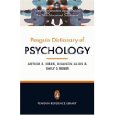Recognizing and Remembering Faces
December 2010 - The ability to recognize and remember faces is best when we are aged 30-34 - ten years later than most of our other mental abilities - according to research to be presented in the journal Cognition.
Laura T. Germine and Ken Nakayama of Harvard University and Bradley Duchaine of Dartmouth College have found that face recognition may require years of practice to perfect. According to Laura Germaine:
"We all look at faces, and practice face-watching, all the time. It may be that the parts of the brain we use to recognize faces require this extended period of tuning in early adulthood to help us learn and remember a wide variety of different faces."
The researchers tested 44,000 volunteers ages 10 to 70 on recognition of computer-generated faces using the web-based Cambridge Face Memory Test. While skill at mental tasks such as remembering names was best between the ages of 23 and 24, skill at face-recognition ability rose sharply from age 10 to 20 and then improved slowly through the 20s to reach a peak between 30 and 34. Similar results were found in another experiment with computer-generated children's faces. The best results were shown by individuals in their early 30s, with face recognition declining slowly with older people. The ability of 65-year-olds roughly matched that of 16-year-olds.
Laura Germine concluded:
"Research on cognition has tended to focus on development, to age 20, and aging, after age 55. Our work shows that the 35 years in between, previously thought to be fairly static, may in fact be more dynamic than many scientists had expected."
Why Do We Never Forget a Face?
January 2007 - A study by researchers from Vanderbilt University published in Psychonomic Bulletin and Review has found that we are able to remember more faces compared to other objects and that faces are retained best in our short-term memory. They suggest that our expertise in remembering faces allows them to be packaged better for memory.
Kim Curby, post-doctoral researcher at Yale University and primary author compared this to packing a suitcase:
"How much you can fit in a bag depends on how well you pack it. In the same way, our expertise in 'packaging' faces means that we can remember more of them."
The study focuses on visual short-term memory (VSTM), a component with limited capacity that helps us process and briefly remember images and objects. Participants were asked to study up to five faces displayed on a screen for varying lengths of time to a maximum of four seconds. Later they were presented with a single face and asked to decide if it was part of the original group. Results were compared with other objects such as watches or cars.
The researchers found that when displays were studied for half a second, more objects than faces were stored in VSTM. They suggest that more time was needed for encoding because faces have greater complexity. However, when given four seconds, an advantage for faces emerged. This outcome was only obtained for faces encoded in the familiar upright orientation; those encoded upside-down showed no such advantage. They suggest that experience leads to upright faces being encoded using the whole configuration not just the parts.
Isabel Gauthier, associate professor of psychology and co-author said:
"Our results show that we can store more faces than other objects in our visual short-term memory. We believe this happens because of the special way in which faces are encoded."
The authors suggest that this research has practical implications for the way we use VSTM, for example in complex social situations or in training people in other categories of objects. They point out that short-term memory is vital to continuity of understanding, serving as temporary storage for information in current use.
Isabel Gauthier explained:
"Our work is the first to show an advantage in capacity for faces over other objects. Our results suggest that because experience leads you to encode upright faces in a different manner (not only using the parts, but using the whole configuration) you can store more faces in VSTM."
Kim Curby said:
"What's striking about this is that some of the most prominent, current theories suggest that the capacity of VSTM is set in stone, unalterable by experience. However, our results clearly show that expert learning impacts VSTM capacity."
The authors plan to study VSTM capacity in experts in other complex objects, such as cars. They also intend to use brain imaging to identify mechanisms in the brain by which faces are encoded more efficiently than other objects.
More Psychology Articles

Fundamentals of Psychology

Psychology
